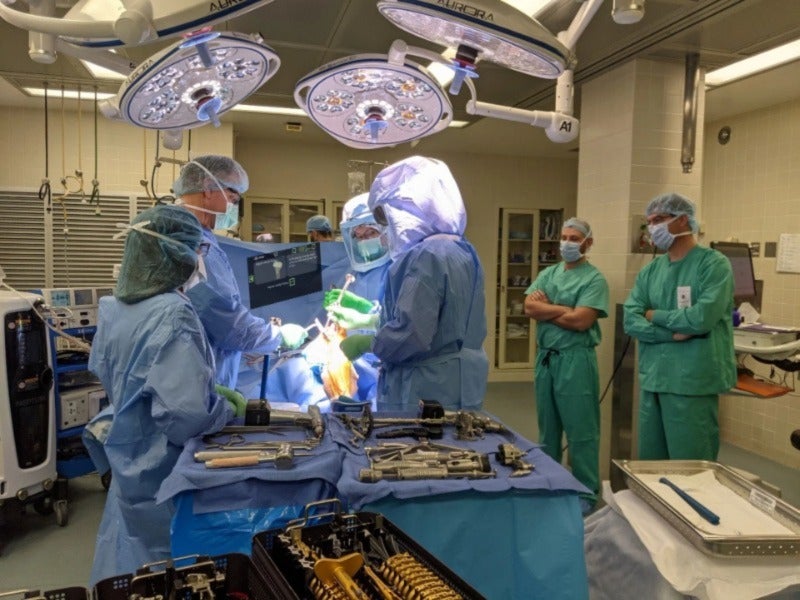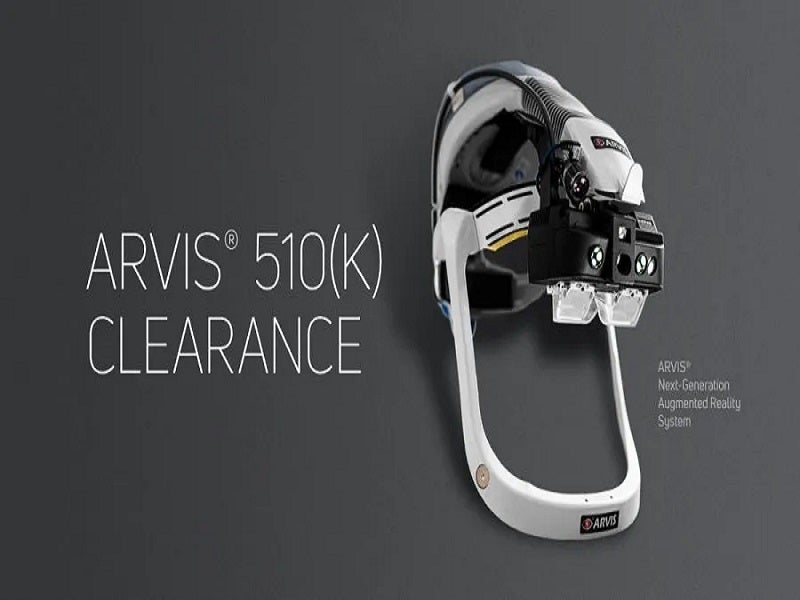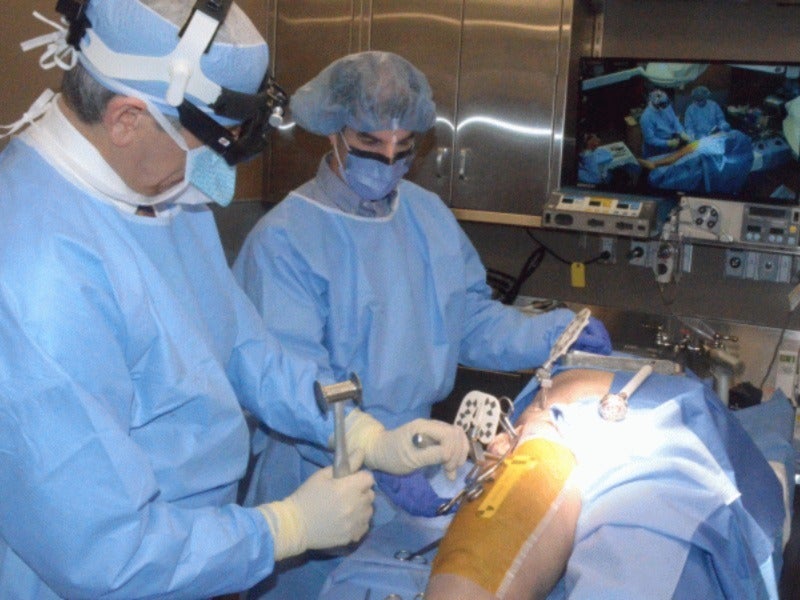ARVIS® or Augmented Reality Visualisation and Information System is a wearable surgical orthopaedic navigation system that uses augmented reality to guide surgeons during surgeries.
Developed by medical device company Insight Medical Systems (IMS), the device received 510(k) clearance from the US Food and Drug Administration (FDA) in July 2021 for total hip, total knee, and unicompartmental knee arthroplasty. It will be commercially available in the third quarter of 2022.
IMS was acquired by Enovis (formerly DJO), a medical technology company, in July 2022 and will become part of the Enovis Surgical unit. Enovis had made an initial investment in IMS in 2020 and a follow-on funding round in 2021.
Design and features
ARVIS® comprises a standalone wearable headset that has the ability to project a virtual model of a patient’s anatomy into the surgeon’s view during surgery.
The headset features two stereo infrared cameras that track the instruments and anatomy accurately from the surgeon’s viewpoint and minimises line-of-sight issues. It includes a controlled 3D augmented reality (AR) display that projects the data and a hands-free user interface integrated into a proprietary eyepiece. The eyepiece was designed specifically to meet the needs of orthopaedic surgeons.
The device projects virtual models of the implants or instruments being used by the surgeons to enable the detection of their location correctly. The orientation and position of instruments and implants concerning the patient’s anatomy are also displayed. It helps perform less invasive surgeries with effective outcomes while reducing the risk to a patient’s life.
The wearable headset also features a high-performance mobile processor that enables real-time tracking and supports user interface features in addition to sensors and a headlight.
It is compatible with surgical helmets and prescription eyeglasses and does not require any external equipment, disposables, additional technicians or computerised tomography (CT)/magnetic resonance imaging (MRI) scans before surgery.
Clinical trials on ARVIS
IMS completed the first cadaveric evaluation of the system in February 2019 for both hip and knee replacement by performing various procedures such as navigating a distal femoral in knee procedure and acetabular cup position in a hip procedure.
The first clinical use with the ARVIS® was completed in December 2021 along with Enovis’ EMPOWR™ implants. More than 30 hip and knee surgeries were performed by seven surgeons across the country.
IMS partnered with Onkos Surgical, a surgical oncology company, to evaluate the applications of the ARVIS® system in musculoskeletal oncology in July 2018. The companies are working on a project that assesses the technology’s use in tumour surgery.
Benefits of ARVIS
The computer assisted surgery (CAS) technology market is growing at a rate of 32% annually. The high cost of acquisition of CAS systems such as robotics along with their large footprint are some of the barriers to their adoption in the surgical setting.
The ARVIS® system is a cost-effective and easy-to-use alternative to robots and traditional surgical navigation systems. It has a minimal footprint in the operation room (OR) enabling it to be used even in small surgery centres and large teaching hospitals where multiple users can use the device concurrently.
The device uses real-life physical space and adds a three-dimensional layer of visualisation and navigation while delivering patient-specific information and real-time assessment directly at the surgical site.
The ARVIS® system can be used for knee indications such as distal femoral resection, tibial resection, and femoral rotation, apart from hip indications such as cup placement including abduction and anteversion, and arthroplasty of the femur.




